How to attract and help hummingbirds with native plants
What’s not to love about hummingbirds? Found only in the Western Hemisphere, these birds are truly The Americas’ sweethearts. The energy-rich nectar they drink keeps their hearts beating up to 1,200 beats per minute and their wings flapping up to 60-80 times per second.
Some species also migrate surprisingly vast distances. The rufous hummingbird, for example, can travel over 6,200 kilometres each way on its annual migration between Alaska and Yukon in the north to Mexico in the south. Not bad for a bird that weighs less than a loonie!
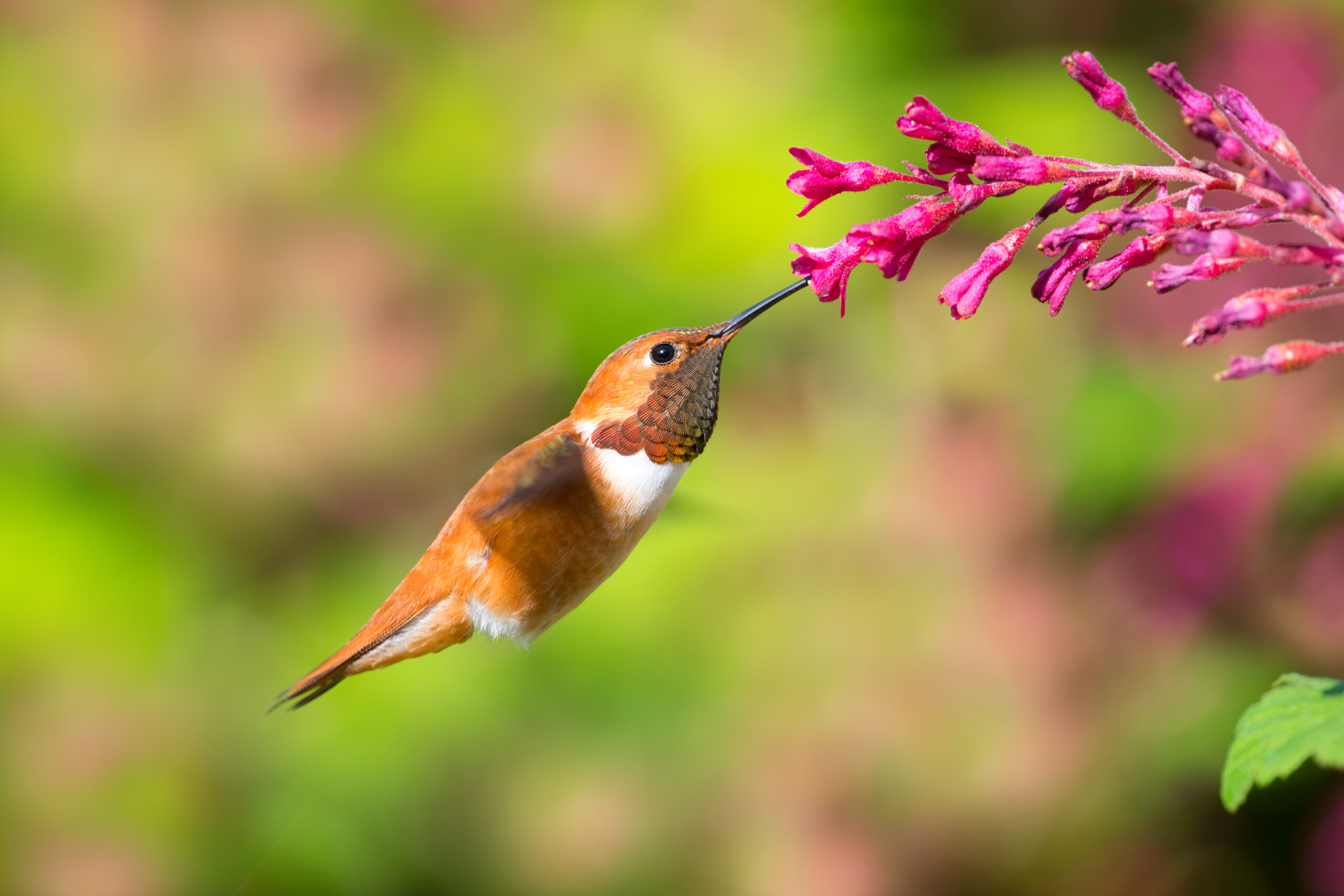
There are more than 360 species of hummingbirds recognized throughout the Western Hemisphere with the greatest variety in Central and South America. Five are regularly seen in Canada.
Hummingbirds in Canada
Rufous hummingbird (Selasphorus rufus)
Adult males are mostly orange with a bronzy, iridescent throat patch called a gorget. Females and young males are mostly orange and green. In Canada, you can spot them in BC and parts of Yukon and Alberta during their breeding season from March through September before they travel to Mexico for the winter.
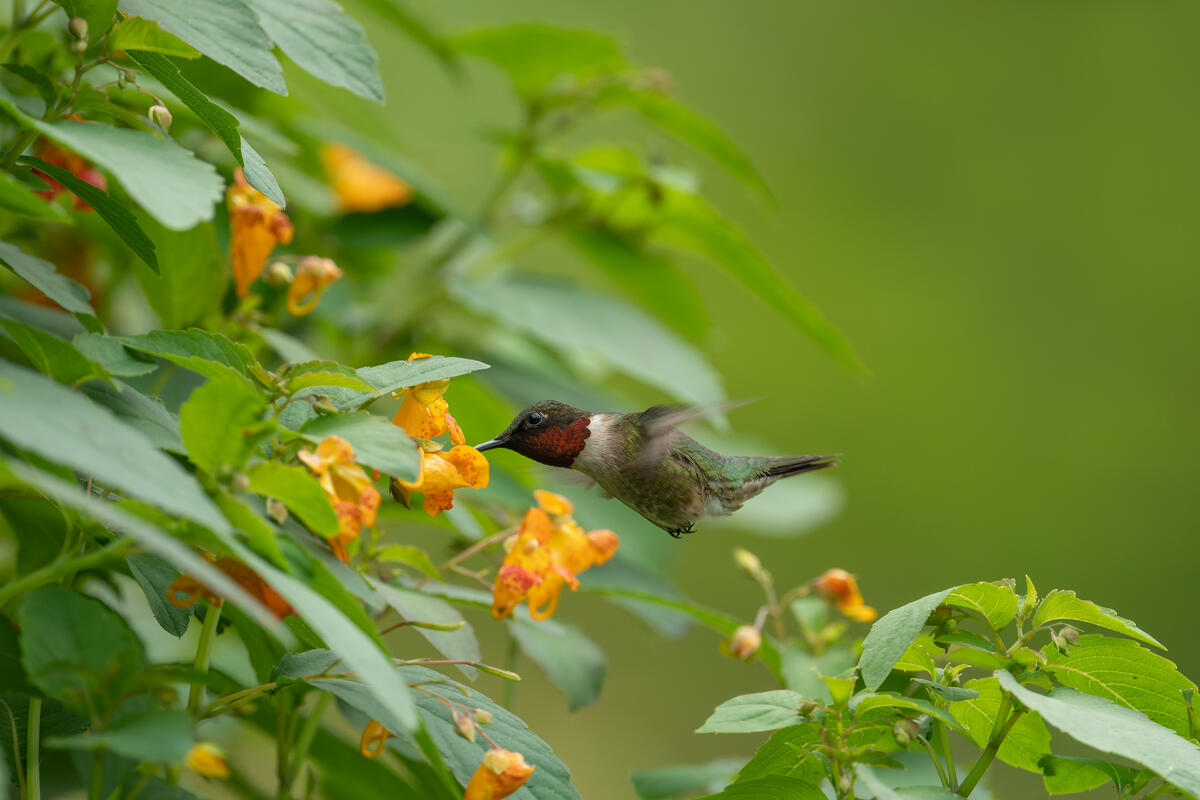
Ruby-throated hummingbird (Archilochus colubris)
This species has the widest range in Canada of all the hummingbirds, breeding in Alberta, Saskatchewan, Manitoba, Ontario, Quebec, New Brunswick, Nova Scotia and PEI. It spends the colder months in southern Florida, Mexico and Central America. True to its name, the adult male sports a bright red gorget while females and young males are mostly iridescent green and white.
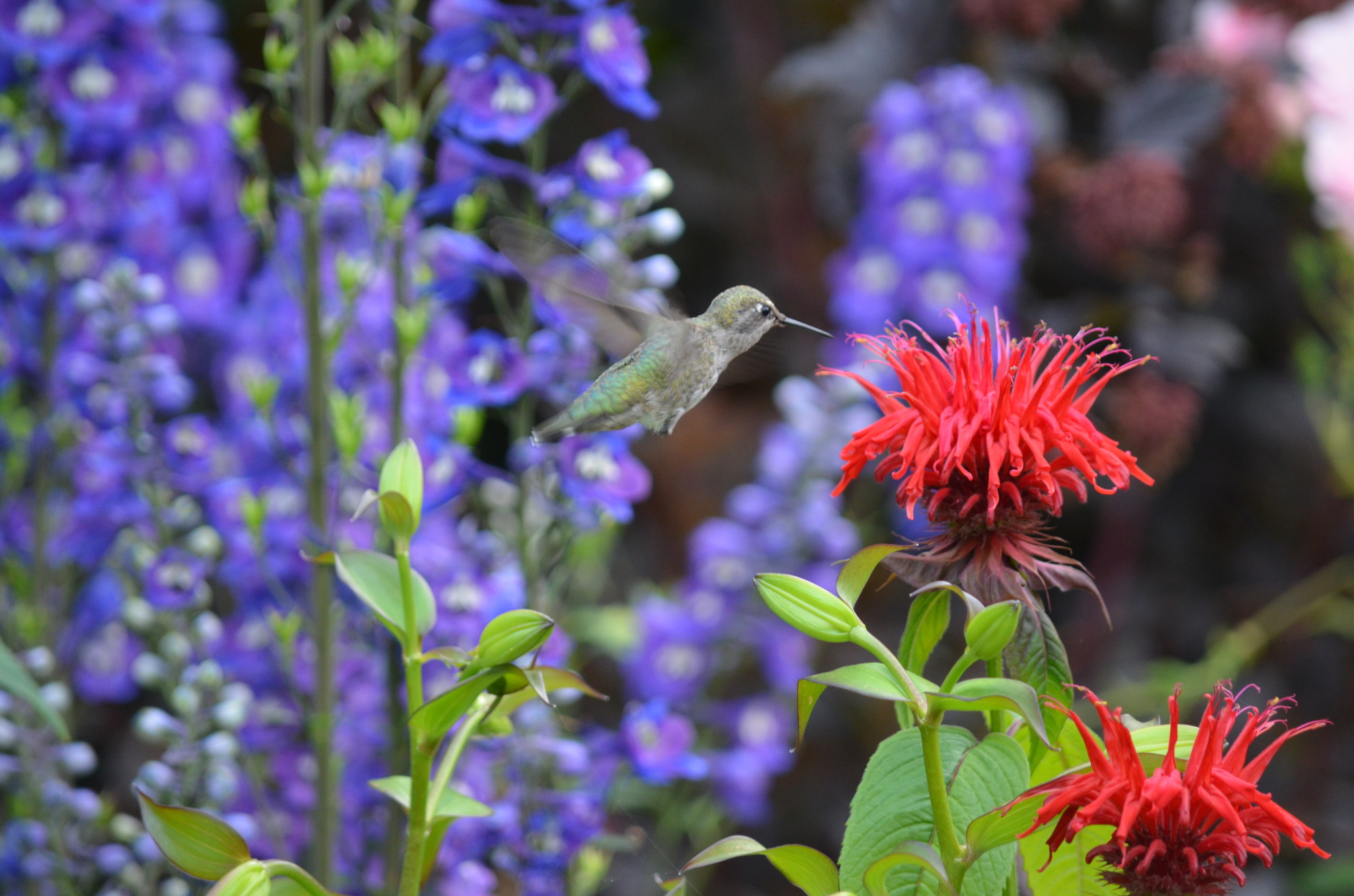
Anna’s hummingbird (Calypte anna)
Unlike the others mentioned here, Anna’s hummingbirds spend winter in Canada and go south for the breeding season or stay in Canada year-round. Within Canada, they are normally found only in BC and are the official city bird for Vancouver. It’s easy to see why! Adult males have a striking pink-and-orange gorget that extends to the top of the head and shiny green feathers over most of the body. Even females can have a tiny pink gorget as well.
Calliope hummingbird (Selasphorus calliope)
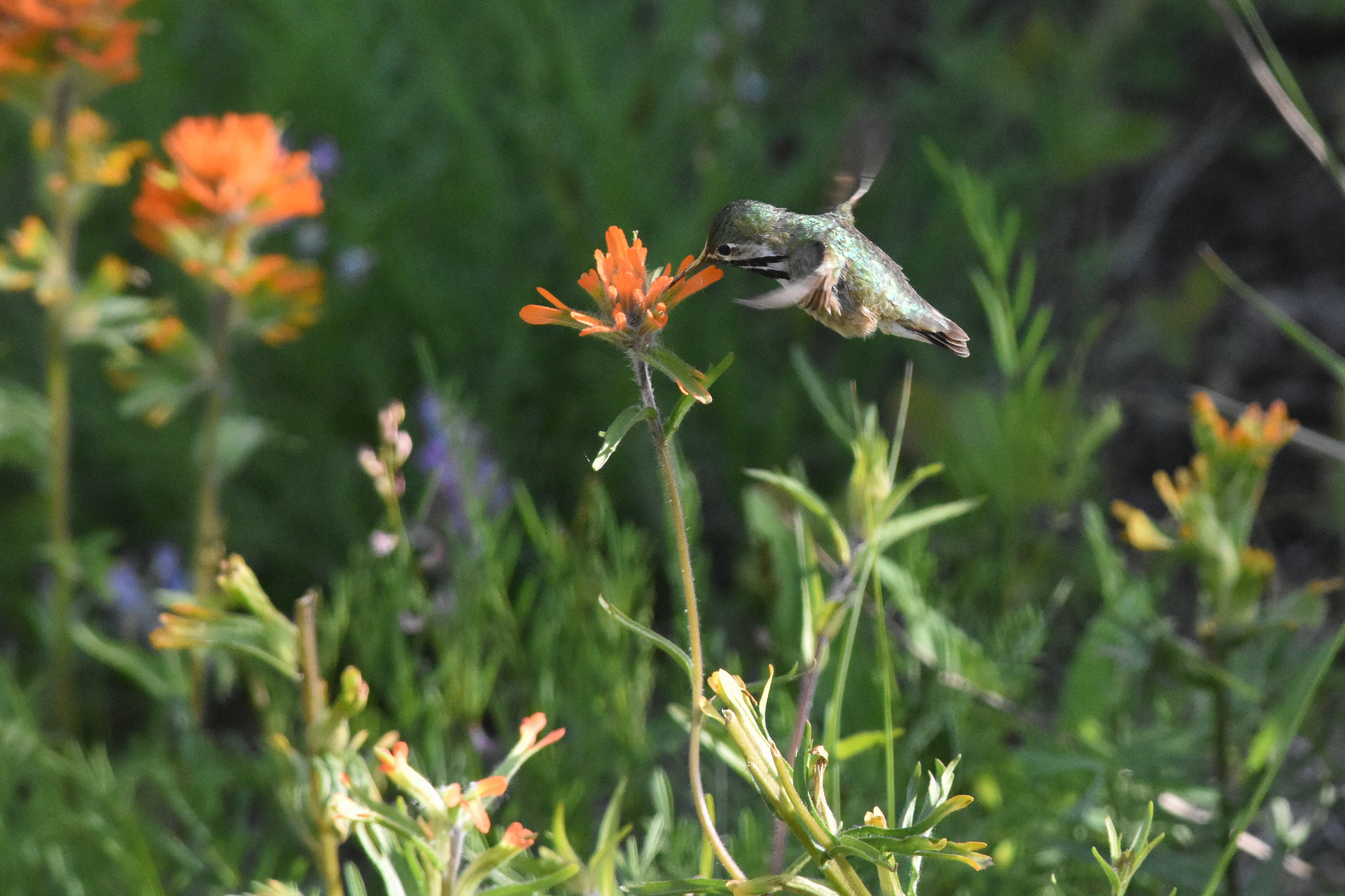
Look closely or you might mistake this bird for a bee. The calliope hummingbird is the smallest of all breeding bird species in Canada. Look for it in BC and southwestern Alberta from April through August.
The adult male looks majestic with its dark pink striped gorget flaring out on either side of its throat. Females and young males have pleasant peach-coloured breasts and metallic green feathers on their back.
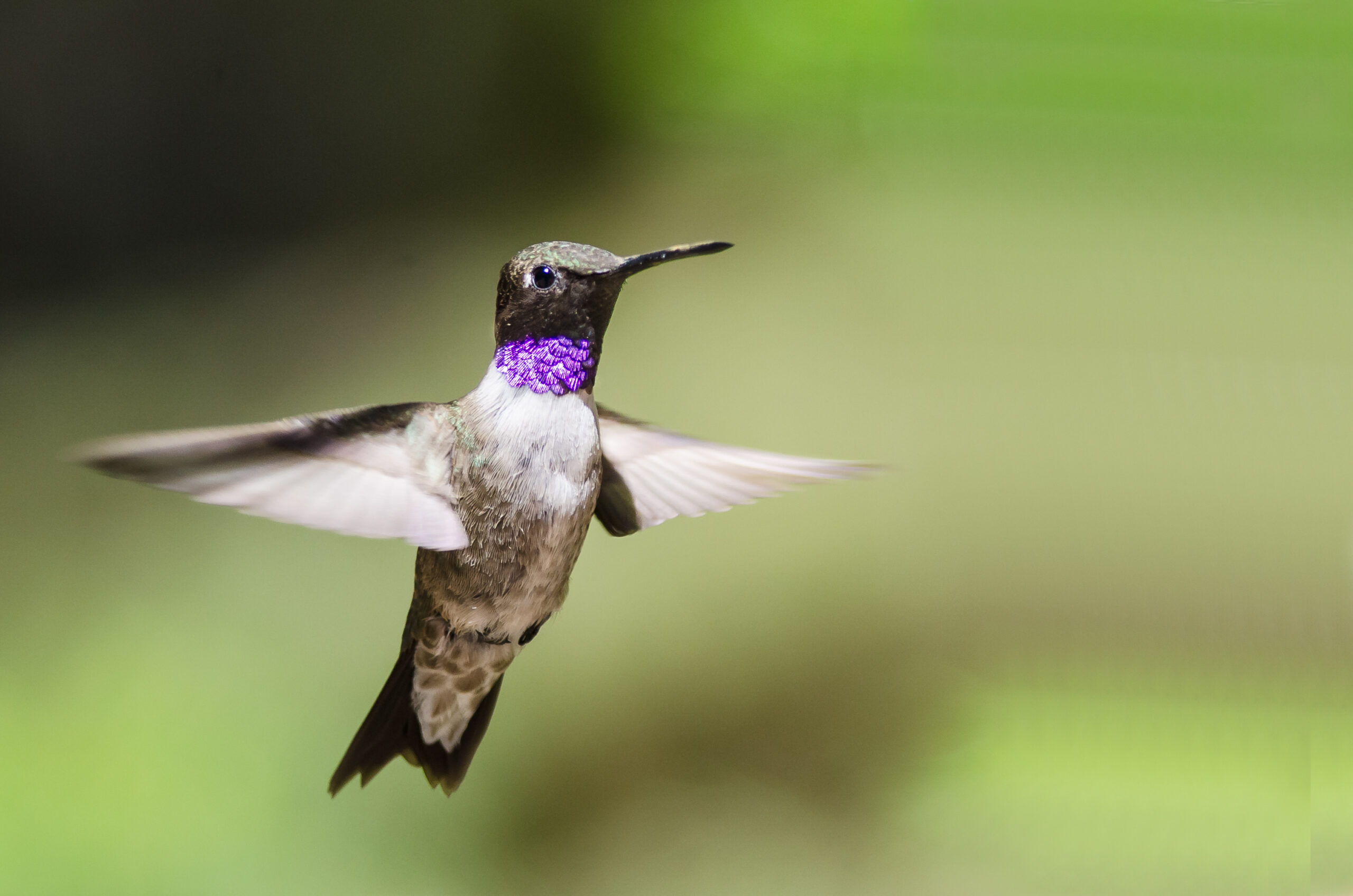
Black-chinned hummingbird (Archilochus alexandri)
The adult male looks debonair with a slim build, black and purple gorget, dull green “jacket” and pale breast. Females and young males wear subtle dull green and gray tones with eye-catching white tips on the outer tail feathers. This species has a limited range in Canada, spending the May to October breeding months in parts of BC’s lower mainland in between winters in Mexico.
Hummingbird pollinators look for eye candy
Ever watched a hummingbird hover in front of a flower before plunging its bill inside to sip nectar? In this intimate ballet, pollen sticks to the bird only to come off on another flower it visits, resulting in pollination. That’s how hummingbirds across the Western Hemisphere can pollinate more than 7,000 species of flowers.
To find flowers, hummingbirds don’t so much follow their nose as their eyes. Since people often do the same, the flowers that appeal to hummingbirds are also attractive to us. At least 84 per cent of the flowers hummingbirds feed from are red but they like other bright colours, too. They don’t require “landing pads” or “platforms”, which some flowers provide to insect pollinators in the form of the exposed centres or petals. Instead, hummingbirds go for elongated trumpet or tube-shaped flowers.
Grow native plants to help hummingbirds
Hummingbirds, and the groups of flowering plants in North America that they pollinate today, have been evolving together over the past six or seven million years. Not only do native plants help fuel these species’ energy-demanding lifestyle, they help restore habitat for a range of wildlife, including other pollinators.
Many of the native plants that hummingbirds prefer are stunning and available from nurseries and garden centres for you to plant in your yard or container garden.
Check out the list below and visit re:grow, our how-to hub for growing native plants, for more free resources!
When welcoming hummingbirds to your space, you should also: provide water sources and perches, treat the outsides of your windows with opaque stickers, screens or cord curtains to protect birds from collisions, keep cats inside and avoid pesticide use (hummingbirds eat spiders and insects as well as nectar).
If you use hummingbird feeders, clean them thoroughly at least once a week and take them down if you see birds that look sick or if a bird disease outbreak is reported in your area. Spreading out feeders and plant food sources throughout your yard will help supply multiple hummingbirds — a territorial male will sometimes monopolize the feeder if it’s the only food source present.
Plant species that hummingbirds visit and/or pollinate in Canada
Note: Just because a plant species is listed for your province does not mean that the plant is native throughout the entire province. We recommend doing further research to find out which plant species are native to, and thrive in, your specific region and growing conditions.
Yukon
- Common bearberry — Arctostaphylos uva-ursi
- Fireweed — Chamaenerion angustifolium
- Great red paintbrush — Castilleja miniata
- Harebell — Campanula rotundifolia
- Mountain larkspur — Delphinium glaucum
- Red elderberry — Sambucus racemose
- Western columbine — Aquilegia formosa
British Columbia
- Bristly bearberry — Arctostaphylos columbiana
- Columbia lily — Lilium columbianum
- Common bearberry — Arctostaphylos uva-ursi
- Elmer’s paintbrush — Castilleja elmeri
- Fireweed — Chamaenerion angustifolium
- Great red paintbrush — Castilleja miniata
- Harebell — Campanula rotundifolia
- Harsh paintbrush — Castilleja hispida
- Mountain larkspur — Delphinium glaucum
- Red elderberry — Sambucus racemose
- Red-flowering currant — Ribes sanguineum
- Scarlet gilia — Ipomopsis aggregate
- Seep paintbrush — Castilleja minor
- Spotted Joe Pye weed — Eutrochium maculatum
- Western columbine — Aquilegia Formosa
- Wild bergamot — Monarda fistulosa
- Wood lily — Lilium philadelphicum
Alberta
- Blue giant hyssop — Agastache foeniculum
- Common bearberry — Arctostaphylos uva-ursi
- Fireweed — Chamaenerion angustifolium
- Golden currant — Ribes aureum
- Great red paintbrush — Castilleja miniata
- Harebell — Campanula rotundifolia
- Harsh paintbrush — Castilleja hispida
- Mountain larkspur — Delphinium glaucum
- Red elderberry — Sambucus racemose
- Spotted jewelweed — Impatiens capensis
- Spotted Joe Pye weed — Eutrochium maculatum
- Western columbine — Aquilegia Formosa
- Wild bergamot — Monarda fistulosa
- Wood lily — Lilium philadelphicum
Saskatchewan
- Blue flag iris — Iris versicolor
- Blue giant hyssop — Agastache foeniculum
- Common bearberry — Arctostaphylos uva-ursi
- Fireweed — Chamaenerion angustifolium
- Golden currant — Ribes aureum
- Great red paintbrush — Castilleja miniate
- Harebell — Campanula rotundifolia
- Mountain larkspur — Delphinium glaucum
- Red columbine — Aquilegia canadensis
- Red elderberry — Sambucus racemose
- Scarlet paintbrush — Castilleja coccinea
- Spotted jewelweed — Impatiens capensis
- Spotted Joe Pye weed — Eutrochium maculatum
- Wild bergamot — Monarda fistulosa
- Wood lily — Lilium philadelphicum
Manitoba
- Blue flag iris — Iris versicolor
- Blue giant hyssop — Agastache foeniculum
- Common bearberry — Arctostaphylos uva-ursi
- ireweed — Chamaenerion angustifolium
- Great red paintbrush — Castilleja miniate
- Harebell — Campanula rotundifolia
- Red columbine — Aquilegia canadensis
- Red elderberry — Sambucus racemose
- Scarlet paintbrush — Castilleja coccinea
- Spotted jewelweed — Impatiens capensis
- Spotted Joe Pye weed — Eutrochium maculatum
- Wild bergamot — Monarda fistulosa
- Wood lily — Lilium philadelphicum
Ontario
- Blue flag iris — Iris versicolor
- Blue giant hyssop — Agastache foeniculum
- Butterfly milkweed — Asclepias tuberosa
- Canada lily — Lilium canadense
- Cardinal flower — Lobelia cardinalis
- Common bearberry — Arctostaphylos uva-ursi
- Fireweed — Chamaenerion angustifolium
- Hairy beardtongue — Penstemon hirsutus
- Harebell — Campanula rotundifolia
- Michigan lily — Lilium michiganense
- Purple giant hyssop — Agastache scrophulariifolia
- Red columbine — Aquilegia canadensis
- Red elderberry — Sambucus racemose
- Scarlet beebalm — Monarda didyma
- Scarlet paintbrush — Castilleja coccinea
- Spotted jewelweed — Impatiens capensis
- Spotted Joe Pye weed — Eutrochium maculatum
- Trumpet creeper — Campsis radicans
- Virginia bluebells — Mertensia virginica
- Wild bergamot — Monarda fistulosa
Quebec
- Blue flag iris — Iris versicolor
- Butterfly milkweed — Asclepias tuberosa
- Canada lily — Lilium canadense
- Cardinal flower — Lobelia cardinalis
- Common bearberry — Arctostaphylos uva-ursi
- Fireweed — Chamaenerion angustifolium
- Hairy beardtongue — Penstemon hirsutus
- Harebell — Campanula rotundifolia
- Red columbine — Aquilegia canadensis
- Red elderberry — Sambucus racemose
- Spotted jewelweed — Impatiens capensis
- Spotted Joe Pye weed — Eutrochium maculatum
- Virginia bluebells — Mertensia virginica
- Wild bergamot — Monarda fistulosa
- Wood lily — Lilium philadelphicum
New Brunswick
- Blue flag iris — Iris versicolor
- Canada lily — Lilium canadense
- Cardinal flower — Lobelia cardinalis
- Common bearberry — Arctostaphylos uva-ursi
- Harebell — Campanula rotundifolia
- Red elderberry — Sambucus racemose
- Spotted jewelweed — Impatiens capensis
- Spotted Joe Pye weed — Eutrochium maculatum
Nova Scotia
- Blue flag iris — Iris versicolor
- Canada lily — Lilium canadense
- Common bearberry — Arctostaphylos uva-ursi
- Fireweed — Chamaenerion angustifolium
- Harebell — Campanula rotundifolia
- Red elderberry — Sambucus racemose
- Spotted jewelweed — Impatiens capensis
- Spotted Joe Pye weed — Eutrochium maculatum
Prince Edward Island
- Blue flag iris — Iris versicolor
- Common bearberry — Arctostaphylos uva-ursi
- Harebell — Campanula rotundifolia
- Red elderberry — Sambucus racemose
- Spotted jewelweed — Impatiens capensis
- Spotted Joe Pye weed — Eutrochium maculatum
Newfoundland and Labrador
- Blue flag iris — Iris versicolor
- Common bearberry — Arctostaphylos uva-ursi
- Fireweed — Chamaenerion angustifolium
- Harebell — Campanula rotundifolia
- Red elderberry — Sambucus racemose
- Spotted jewelweed — Impatiens capensis
- Spotted Joe Pye weed — Eutrochium maculatum
To learn more about some of the plants hummingbirds prefer, watch this presentation featuring our resident botanist, Ryan Godfrey.


